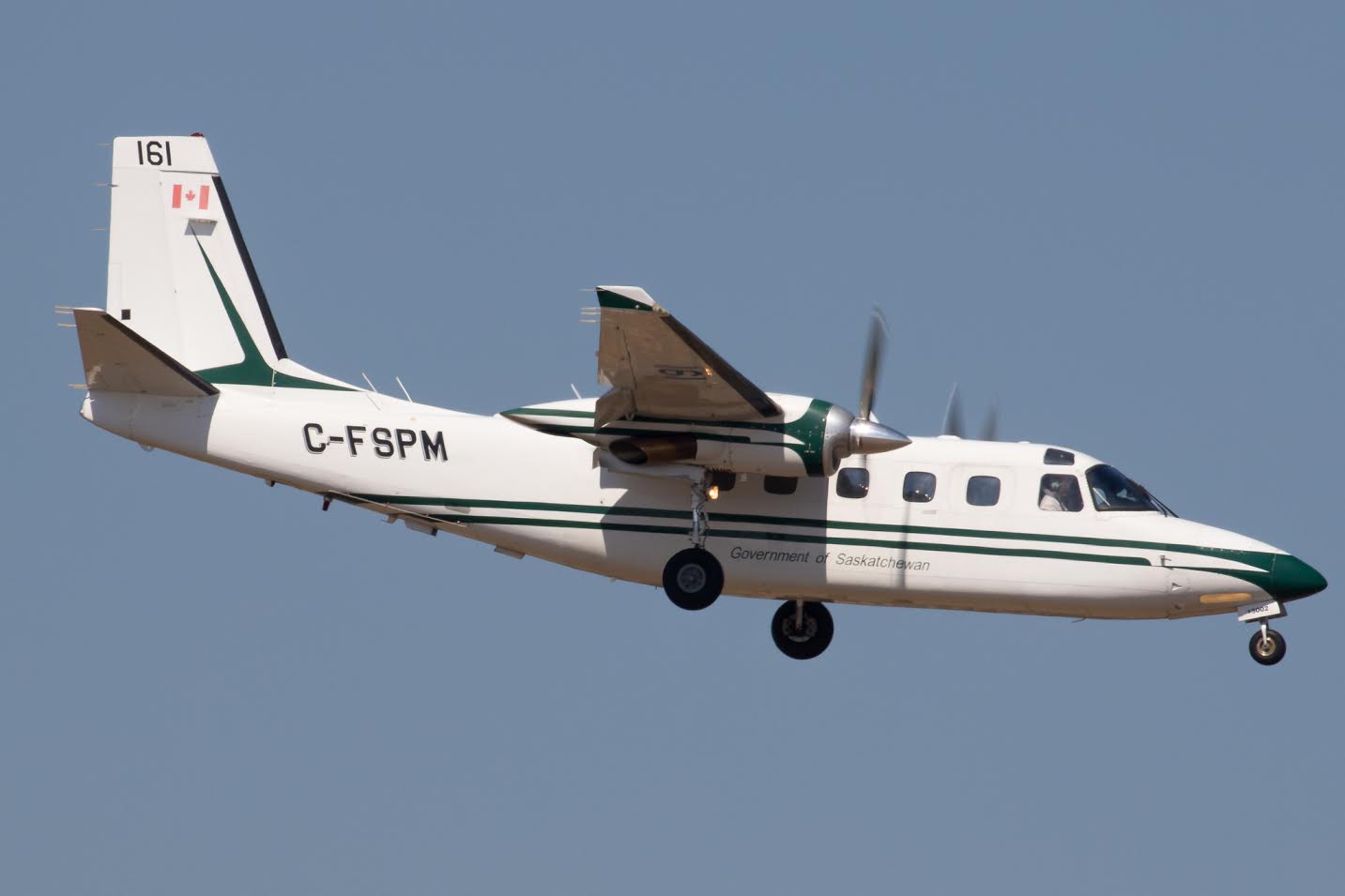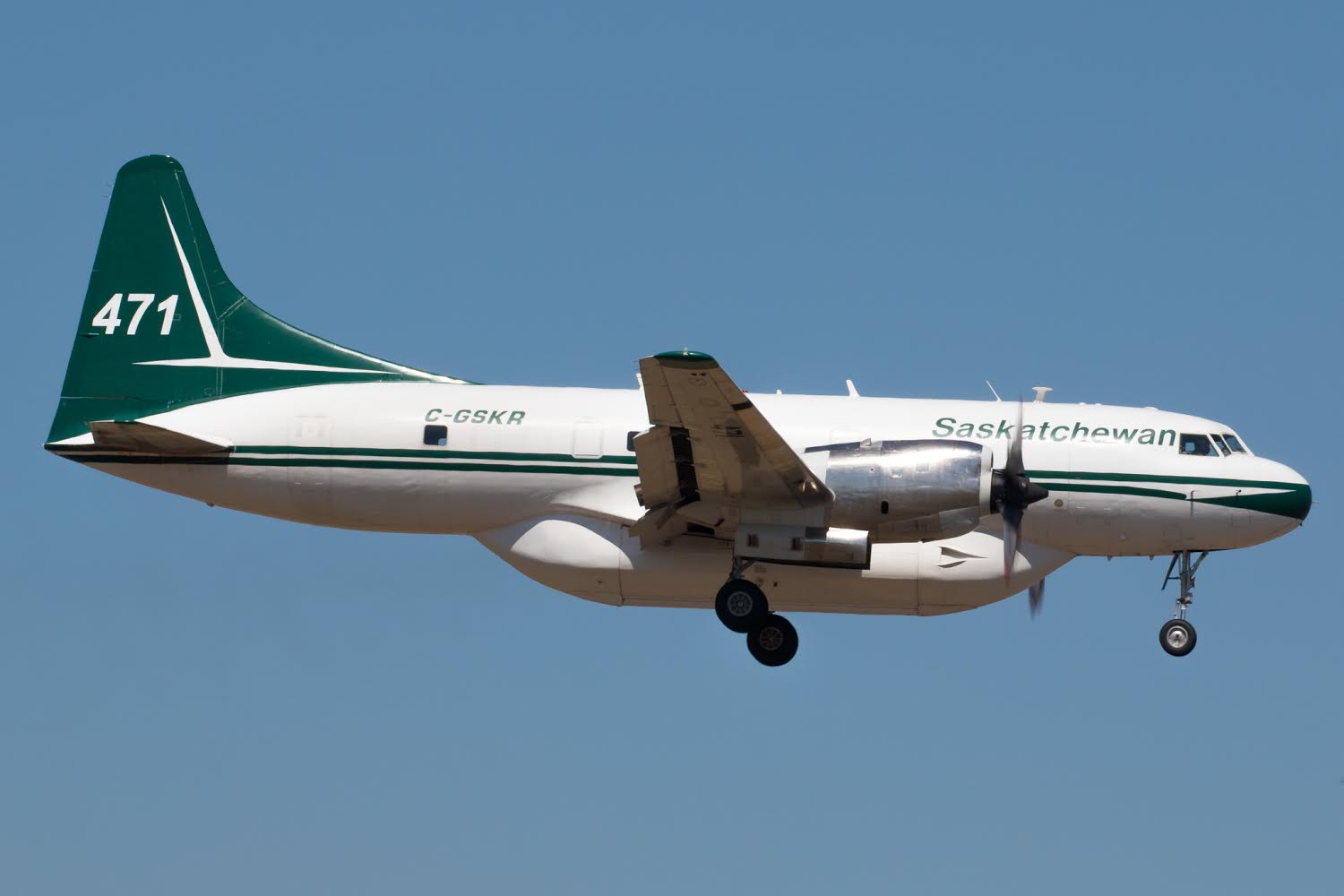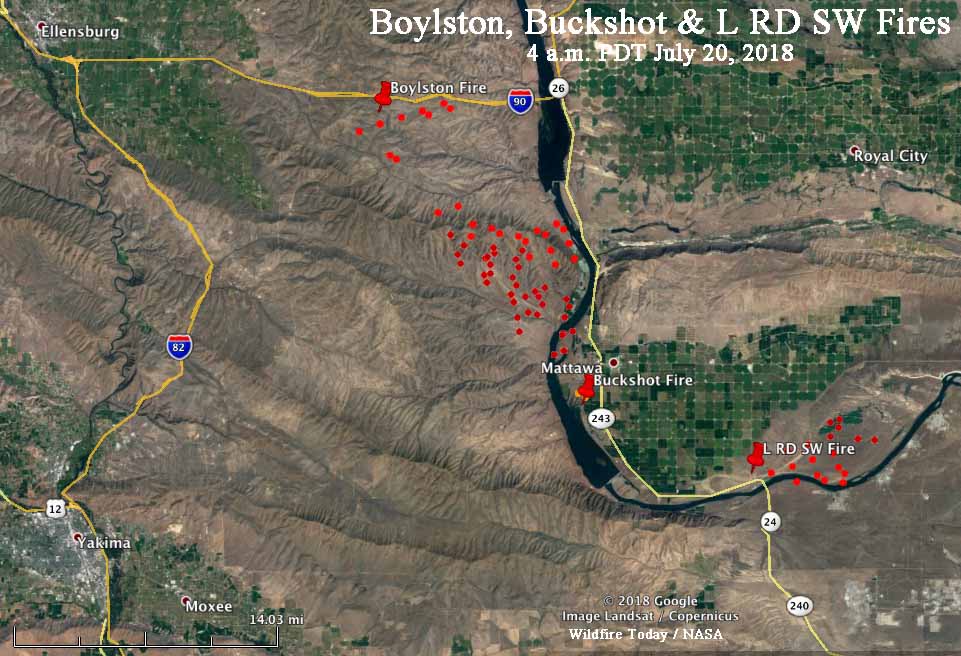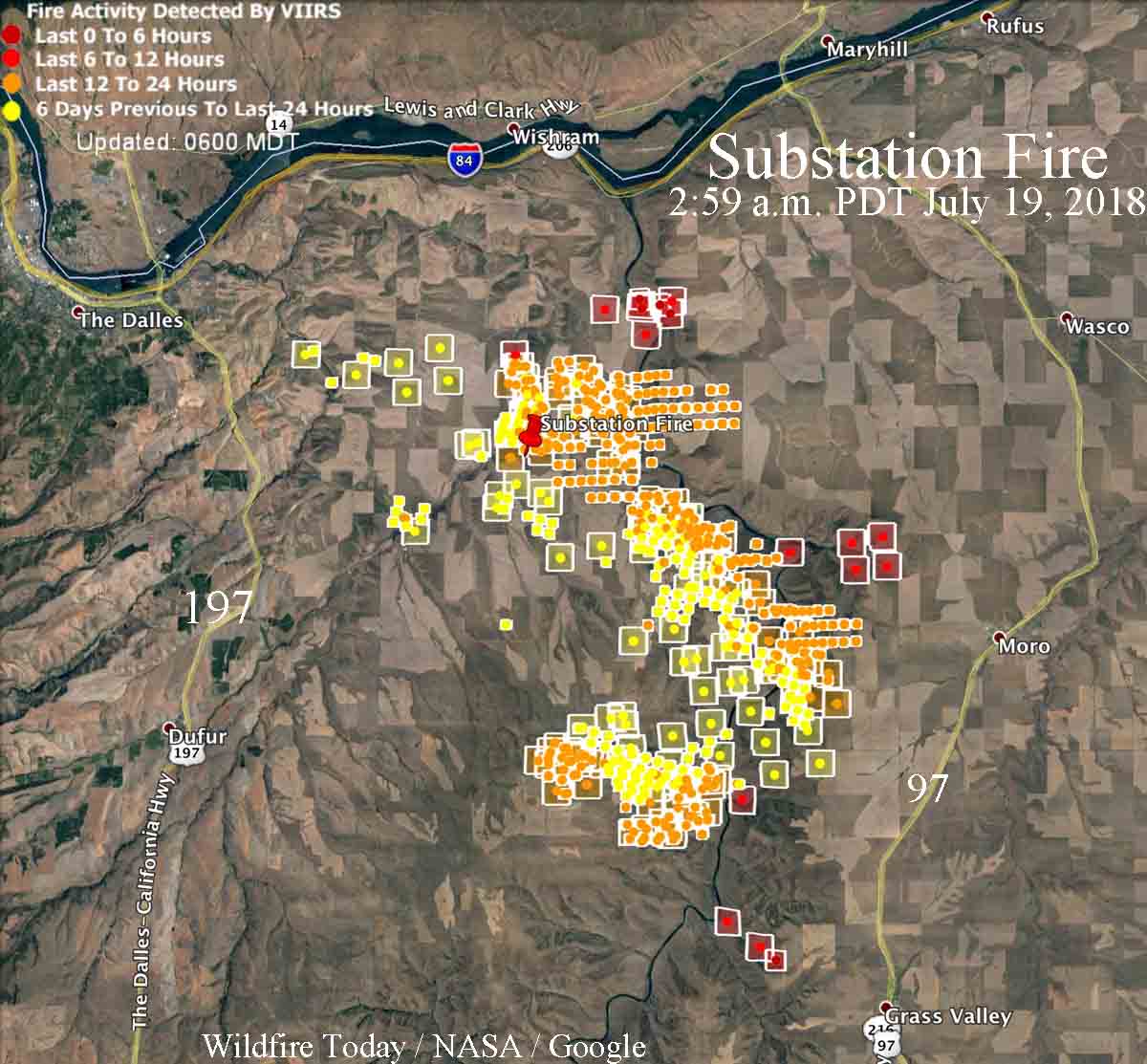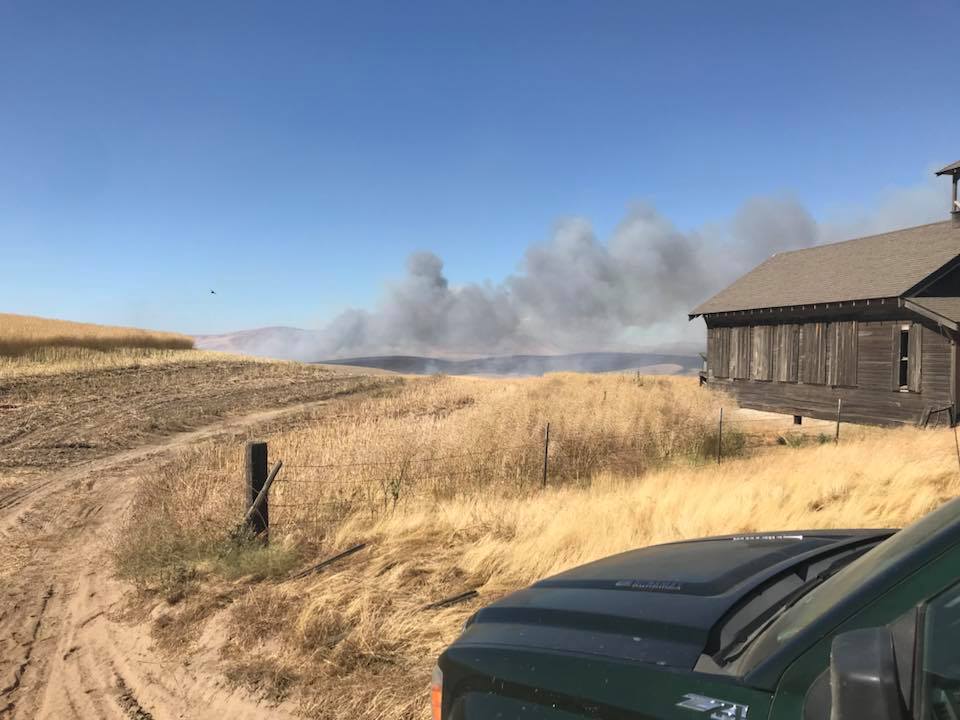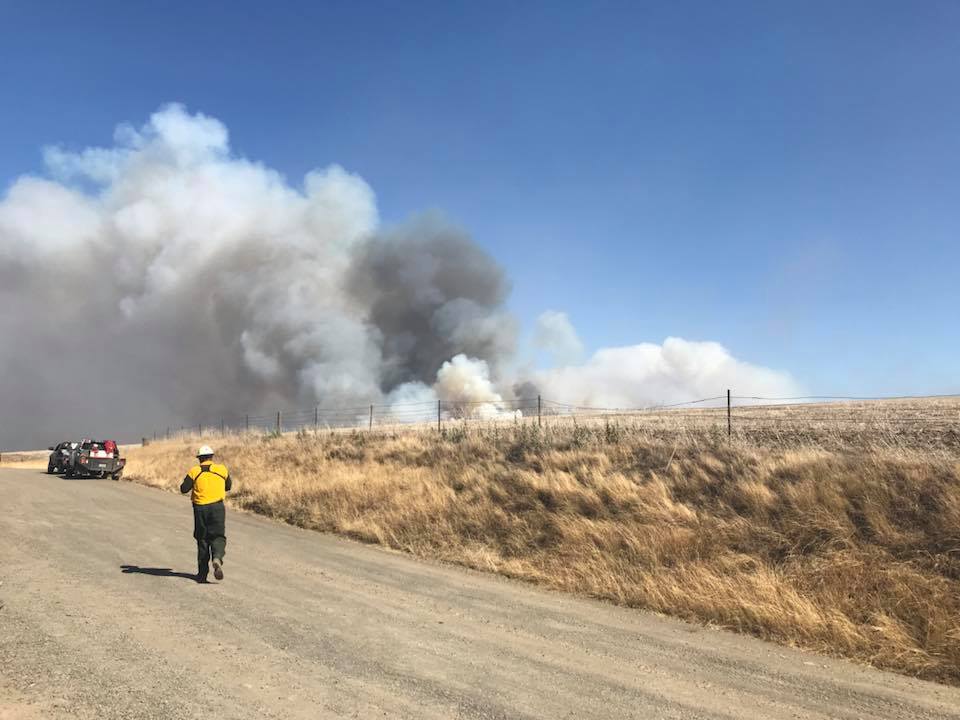(UPDATED at 4:19 a.m. PDT July 22, 2018)
Friday night and Saturday the Ferguson Fire west of Yosemite National Park in California grew by more than 3,300 acres to bring the total to about 30,400 acres. Most of the activity was on the north flank where it jumped across Highway 140 and the Merced River Friday afternoon but the fire also ate up additional acreage on the southeast side. Firefighters engaged the slop over across the river early Saturday but were unable to make headway in the steep, rugged terrain.

Again Saturday the inversion trapped smoke, decreasing visibility and making it a challenge to use aircraft. The inversion also slows the fire, reducing solar heating of the fuels and preventing strong winds which can be the most important factor affecting the rate of spread. When the smoke cleared in the afternoon fire activity increased, which has been the pattern for the last several days.
CLICK HERE to see all of the articles on Wildfire Today about the Ferguson Fire, including the most recent.
(UPDATED at 4:25 p.m. PDT July 21, 2018)
The Mariposa County Sheriff’s Office issued additional mandatory evacuation orders Saturday for the Ferguson Fire west of Yosemite National Park in California.
- Anderson Valley Area — northwest of the El Portal Area. At this time there are no Evacuation Orders or Advisements in the Greeley Hill or Coulterville Communities.
- Yosemite West
On the map below, click on the circles to see more information.
(Originally published at 7:24 PDT July 21, 2018)
At about 3 p.m. PDT Friday afternoon two spot fires occurred on the Ferguson Fire west of Yosemite National Park in California. These “slop overs” were on the north side of Highway 140 and the Merced River on a large dog leg near Miller Gulch and Ned Gulch in an area that was too steep and rugged for fixed wing air tankers.

While helicopters and hand crews attacked the spot fires near the river, air tankers painted the upper slopes with retardant. Firefighters on other parts of the fire and additional resources from outside the fire were assigned to suppress this new threat. But when a mapping aircraft flew over at 9:30 p.m. 2,000 acres had become established across the river.
This slop over and other growth on the fire brought the total size up to 27,129 acres according to fire officials, an increase of more than 4,000 acres from the day before.

This prompted a mandatory evacuation order from the Mariposa County Sheriff’s Office for Rancheria Government Housing, Old El Portal, Yosemite View Lodge, and Foresta.
The spot fires were across the Merced River and north of Ferguson Ridge which forms a large mile-wide dog leg in the river. On the west side of the dog leg the fire had been tied in with the highway, but from the maps we have seen it appeared that about two miles of the fire edge on the east side of the dog leg were about a third of a mile from the river. (Note the yellow line on the map above that represents the fire edge Thursday night.)
Until Friday, firefighters on the Ferguson Fire had been able keep the fire south of the highway and the river. This is a whole new ball game for the incident management team. In crossing the river the fire spread from the Sierra National Forest into the Stanislaus National Forest in an area that is very steep with difficult access. Friday night the slop over was about four miles from Yosemite National Park burning in a major drainage leading to the park boundary. A mile or two beyond that — Highway 120, Tioga Road, and Big Oak Flat Road.
Other areas on the fire were also active Friday, with most of the additional growth being on the south and east sides. Crews continued to make progress building line along the southwest and western edges of the fire near Jerseydale and Mariposa Pines.
Yosemite National Park is open, but very smoky.





